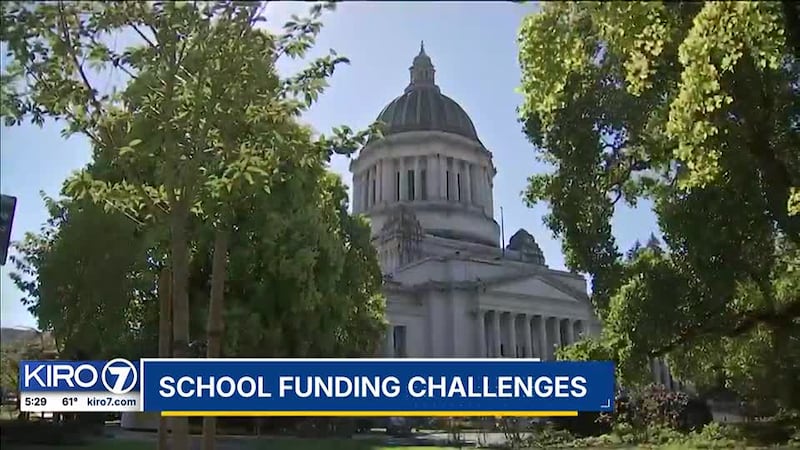Seattle Public Schools’ proposal to close several schools is a symptom of a larger issue affecting districts across Washington — funding districts rely on from the state is insufficient, especially in the wake of inflation.
State funding has long been a discussion point in Washington since 2012 when school districts took legal action against the state for not adequately funding schools as state law requires. The State’s Supreme Court agreed and ordered state lawmakers to act. In 2018, they finally did, funding K-12 education with approximately 52% of the state’s general fund. Today though, that funding is about 44% of the general fund, and it’s forcing school districts to make tough choices.
“If special education services were fully funded, we would not have had to make budget cuts this year,” said Amy Cast, a North Shore School Board member.
Over two years, North Shore has made approximately $47 million in cuts in order to meet its special education requirements. Cast says special education is not fully funded by the formula created in the 2018 funding fix. Districts are making up that funding in a variety of ways.
“We anticipated that we would be using about 20% of our levy collections just to backfill what was unfunded related to special education services,” said Erin Murphy, Superintendent for the Lakewood School District in Snohomish County.
Backfilling the underfunding from the state with levy funding is something many school districts have been forced to do in recent years. Auburn schools estimate that 14% of its budget comes from levy sources.
“The amount of funding for districts, considering inflation, is actually lower than [before the court’s ruling],” said Cindy Blansfield, the associate superintendent in charge of business and operations in Auburn.
If special education is one part of the gap, inflation is on the other side. Instead of more traditional inflation measures to calculate rising costs, like the Consumer Price Index from the Bureau of Labor Statistics, Washington state’s formula uses an “inflationary price deflator” that school districts say does not reflect the rising costs they’ve been facing since the pandemic.
Blansfield says fuel has increased by 139% over the past four years, insurance by 67%, utilities by 73%, and food by 62%.
“The [2018] legislation was really soundly created to look at that there was going to need to be a revisiting of this periodically,” Superintendent Murphy says.
Murphy says most of the recommendations when the state did revisit the issue in 2022 were not made, like around inflation calculation and other funding allocations.
“It’s almost like a tug of war,” Cast said, “You have all these different forces pulling on schools right now and it’s just reached a crisis.” Cast predicts more cuts will be made in North Shore if the State funding doesn’t change.
School districts told KIRO 7 that they are thankful for the support of the communities that have increased their own property taxes in order to fund schools, though they worry that goodwill may run out at some point, given the current trajectory and budget pressures voters are dealing with on their own.
“I think we all worry about that,” Lakewood School Board member Sandy Gotts said, “It is relational and when you have a relationship with your community, that support system can be built in.”
On the occasion that the support isn’t met when districts can’t pass levy increases or bond measures, Murphy worries it’s creating an environment where some districts are being left behind.
“It doesn’t create the same education opportunities and access for students across our state when we become reliant on our local communities to backfill in these ways,” said Superintendent Murphy.
©2024 Cox Media Group








